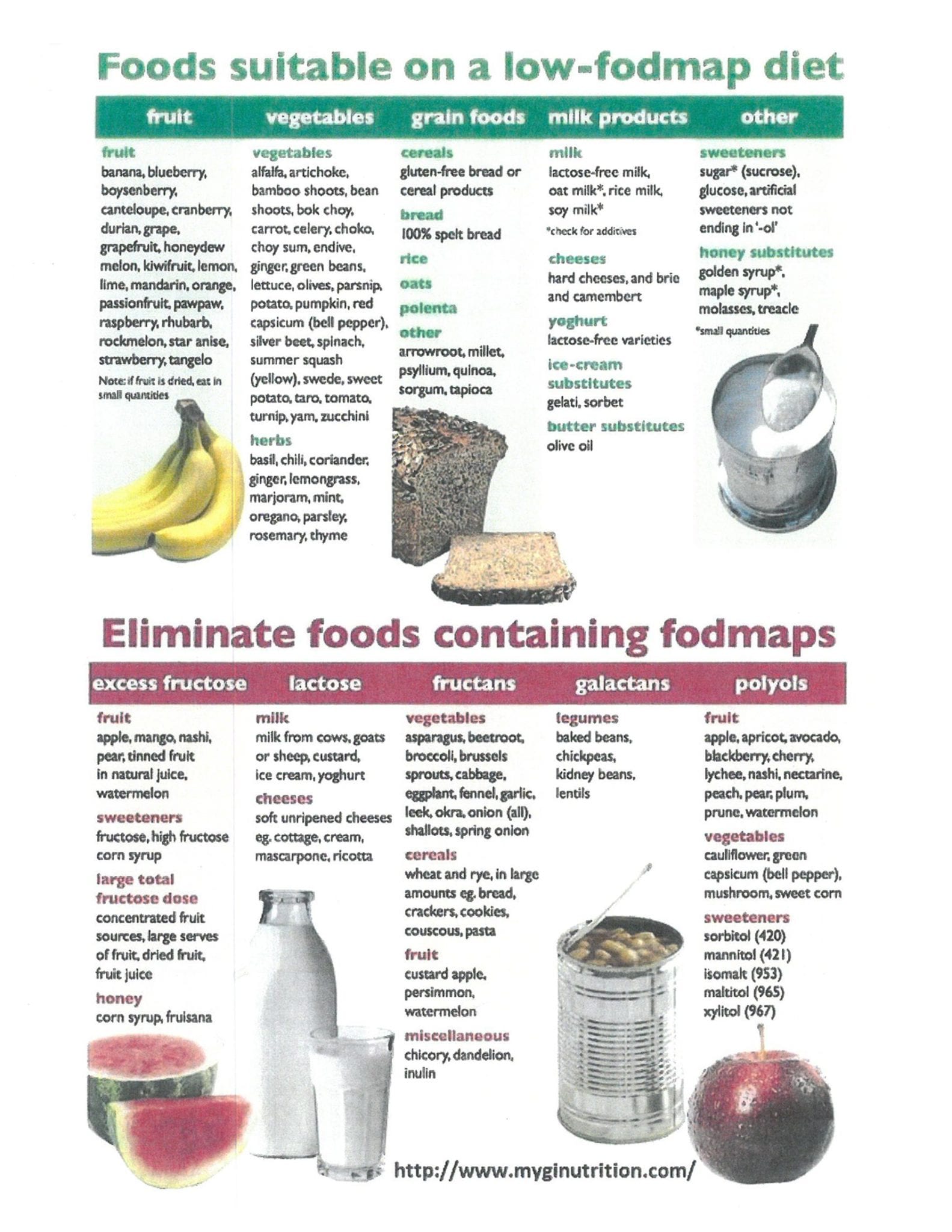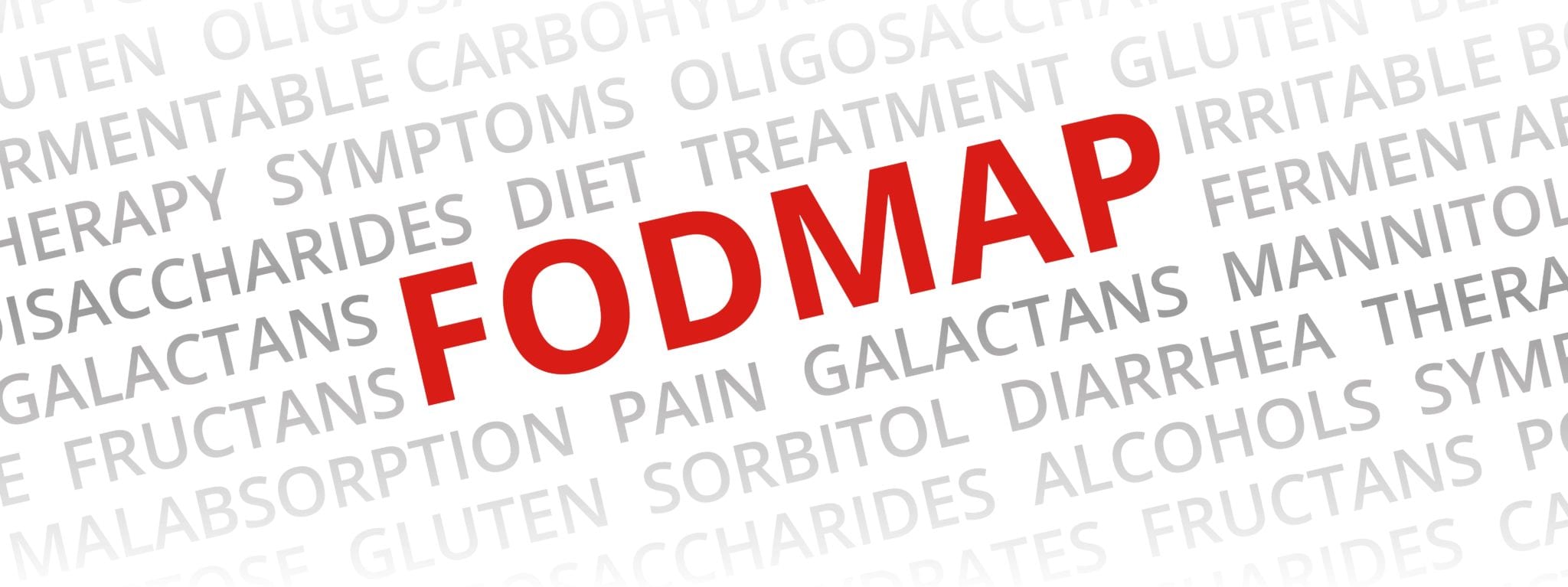FODMAPs are certain kinds of carbohydrates found in food. Not all carbohydrates are FODMAPs, just certain ones. FODMAP is an acronym for:
Fermentable Oligosaccharides, Disaccharides, Monosaccharides And Polyols.
FODMAPs are different types of sugar and fiber that ferment in the large intestine. People who are sensitive to FODMAPs may develop GI symptoms that can be embarrassing or even painful. In people with a sensitive gut or IBS (Irritable Bowel Syndrome), it causes symptoms such as bloating, abdominal pain and diarrhea.
There are 5 main types of FODMAPs:
• Lactose
• Fructose
• Fructans
• Galacto-oligosaccharides (GOS)
• Polyols
What is the low FODMAP diet?
Everyone has a different amount of FODMAPs that their body can handle before starting to feel symptoms. One goal of the low FODMAP diet is to learn more about the quantity of FODMAPs your body can handle.
- 1. When you stop eating FODMAPs, you are in the elimination phase. This is when you stop eating FODMAPs for a while.
2. During the reintroduction phase, you slowly reintroduce one type of FODMAP at a time. This will help you find which FODMAPs, and how much, trigger your symptoms.
- 3. After elimination and reintroduction, you’ll have a better sense of what you can eat and what you can’t eat. Hopefully, you’ll also see improvements in your symptoms and will feel better.
How do I try the Low FODMAP Diet?
To figure out which foods don’t agree with your system, you can try the low FODMAP Diet. During this elimination phase, you’ll stop eating the foods that might be irritating your digestive system.
Some good things to remember:
• If you are sensitive to FODMAPs, you will start to feel better pretty quickly once you stop eating them.
• You won’t follow this diet forever, just for a few weeks to find out if you’re sensitive to FODMAPs or not. If you are, we will help you figure out which specific FODMAPs you are sensitive to.
• Use the list from the FODMAP diet to help you determine what foods you can and can’t eat.
• Learn your triggers. You’ll be able to determine what FODMAPs you’re able to tolerate.
• Before starting a FODMAP diet, please consult with your gastroenterologist or dietitian.
If you are suffering with IBS symptoms and want to learn more about the FODMAP diet, call and schedule your appointment today with Granite Peaks Gastroenterology: (801) 619-9000.
FODMap Diet (see chart below)
Source: www.myginutrition.com


